Meeting the goal of Ohio EPA’s landfill diversion requirements of 25 percent commercial and municipal solid waste, and 50 percent industrial manufacturing waste on a consistent basis, Miami County Solid Waste District is doing its part to continue to drive for the diversion in a sustainable manner.
The Miami County Solid Waste District was first formed in 1968 in Ohio as the Miami County Garbage and Refuse District. The Miami County Solid Waste District is a single county district that operates the Miami County Transfer and Recycling Facility. Originally, Miami County constructed an incinerator to handle the waste needs of its businesses and residents. Recognizing the limitations of the “old facility”, Miami County constructed a new, modern, top load transfer facility in 1998. Currently working with a staff of about 15, including administration, the facility has grown to accept an average of more than 100,000 tons of solid waste annually. Miami County has flow control for municipal solid waste, industrial solid waste, and commercial solid waste. While Miami County has flow control, several surrounding counties do not have a landfill or transfer station so that material is sometimes disposed of at the Miami County Transfer and Recycling Facility. Designation on generation fees for surrounding districts is collected at the time of disposal at this facility.
Miami County Solid Waste District contracts landfilling, disposal, and transportation with Republic Services. Republic subcontracts the hauling portion and provides Miami County with 22 trailers, approximately seven drivers and trucks daily. Using a drop and hook system, Miami County owns four semi-trucks and two roll-off trucks.
Miami County also operates one recycling drop-off in the county at the Transfer and Recycling Facility. This is combined in a semi-trailer with other municipalities that self-haul their recycling. These materials are single-stream recyclables and are sent to Rumpke’s Cincinnati, Ohio MRF.
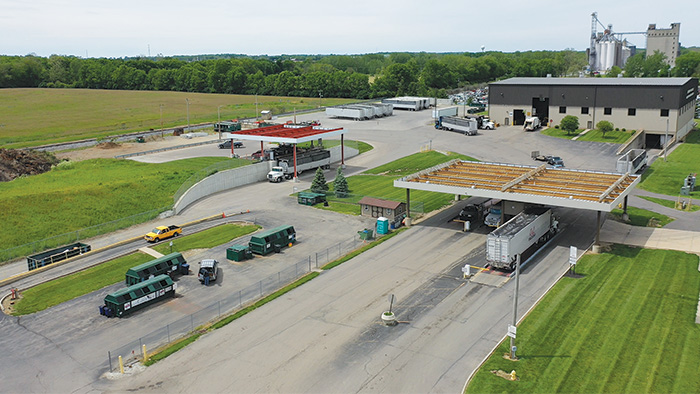
Automated Processing
Over the years, the amount of volume and transactions have increased significantly. To combat this, in 2007, an additional outbound lane was added that is completely automated. “Seeing a steady increase in non-commercial traffic (public), additional drop offs were added. One addition in 2016, included a canopy that covers a drop off designed for residents to load directly into a transfer trailer. The other outdoor drop off was designed for those with pull behind trailers. For more difficult loads, such as a large landscape trailer with roofing, we can use a mixed use space inside of the transfer station to allow them to unload. With these upgrades, Miami County is able to process up to 90 transactions (outbound) per hour,” says Brad Petry, Miami County Solid Waste Coordinator.
When COVID-19 restrictions hit in 2020, it limited what activities the solid waste district could do. “While it wasn’t necessarily a change of volume, it was rather a shift in where the material was coming from. Residential recycling picked up significantly during that time because everyone was home and remodeling. Residential haulers were coming in with a lot of CD&D material from residences,” says Petry. “While we are set up well to handle commercial traffic, we are also efficient with private resident drop off as well. We have a $5 minimum for up to 200 pounds and it makes it very affordable for residents to haul their own trash.” During that period of time, Miami County also created drone videos, which became a way to see the facility and its function in a way that the public had not seen before. These were posted on their website (www.miamicountyrecycles.org/videos-of-facility), YouTube, and Facebook page (www.facebook.com/miamicountyRecycles). “Those videos have been viewed almost 10,000 times each!” exclaims Petry. When many of the restrictions lifted in late 2021 the Miami County Transfer and Recycling Facility was able to allow schools to welcome outside visitors once again. In addition, Miami County implemented a new educational program from a local museum. The Boonshoft Museum of Discovery offers a program that is math based but recycling related. It teaches students how much they throw away and how to best recycle and has been very popular among Miami County Schools. Three thousand students in Miami County from grades K-5 have participated in the program.
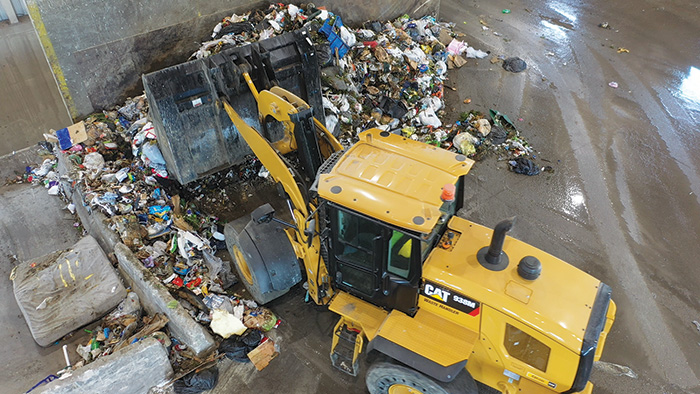
Photos courtesy of Miami County Solid Waste District.
According to Petry, contamination is always going to be an ongoing battle. “When it comes to recycling, we make sure that we are educating residents on the waste stream. Since we are in the Rumpke MRFshed, we follow very closely the educational materials they put out. We develop, print, distribute brochures and flyers as needed.” He stresses that whatever you want to do in education, it must be consistent, so having a script is important in order to convey the messages the best you can. “We have seen behavior change over the course of time, but we want to stay on top of these campaigns with the print materials and online presence, like Facebook or in-person presentations. We want to make sure we continue to reach the public with proper education in a way that is a positive approach.”
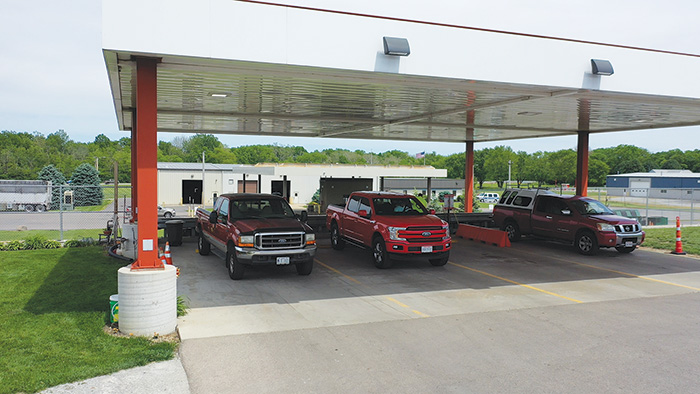
Operations and Outreach
At the Miami County Transfer and Recycling Facility, employees are onboarded and spend several weeks in training. Once proficient in their position, they are then cross trained on several pieces of equipment to assist with the overall operation. Understanding that staff will want to take vacations or, a dependent or themselves may become ill, having a staff that can do most aspects of your operation is critical. Petry also expresses that they have a robust safety program. “It is really about training properly. If you see an issue, address it immediately and convey that message across the staff. Safety is very important to Miami County, and we emphasize that issue during the initial hiring.”
Community outreach is handled by the Miami County Solid Waste District. In addition to the Boonshoft Museum of Discovery’s T.R.A.S.H. program, a Teacher Resource Fair, and partnerships with Miami County Parks, outreach is also conducted through direct mail, advertisements in local newsprint, magazines, brochures, and social media to reach the general public. “The Solid Waste District maintains a robust digital presence,” says Petry. “In addition to reaching the community with our digital footprint, the Solid Waste District presents to local civic groups, churches, schools upon request and we recently began speaking on two different local radio stations about our different activities in the area—the morning show for Power 107 in Troy, OH and WPTW 98.1 in Piqua, OH. We also advertise on radio stations about solid waste district activities.”
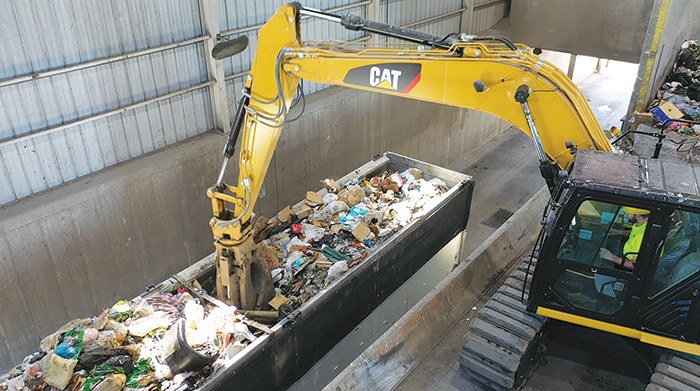
Diversion Goals
The Miami County Transfer and Recycling Facility wants to meet and exceed the goal of Ohio EPA’s landfill diversion requirements of 25 percent solid waste, and 50 percent industrial manufacturing waste, and will do its part to continue to drive for the diversion in a sustainable manner. Petry points out that Miami County is also very forward thinking and looking to the future where things might be expanded, such as organics recycling and dealing with textiles. “We are always going to be thinking about how we can make the facility better and process material as economically as possible. How can we better serve the population? At the end of the day, the goal of the Miami county Solid Waste District is landfill diversion. There is no overnight solution, but it helps in the path forward.”
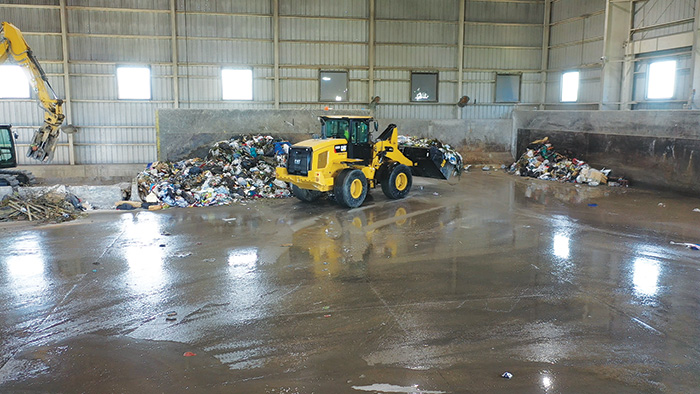
He also does stress that the Miami County Transfer and Recycling Facility could not be as successful without the people involved. “We work together towards one common goal. Not only is it a great service, but we want to do what we can to be good stewards for our environment and our resources. Our greatest success here is our people. Without this strong group of people working together, from the top down, nothing here would be successful.” | WA
For more information, contact Brad Petry at [email protected] or visit www.miamicountyrecycles.org.
